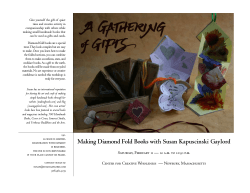
Writing Really Good Dialogue
Writing Really Good Dialogue You're doing great! You've got some original characters, an action-packed plot, and some settings like no other. In fact, you're moving so fast we're having a hard time keeping up with you. Give us a minute so we can eat a delicious energy bar. (Cue sounds of delicious munching.) All right! Now all that's left is learning how to write dialogue. Dialogue, as you probably know, is what happens when two or more characters speak to one another. We experience dialogue all the time in our everyday lives. Here’s some dialogue you might’ve heard today. Notice how the author indents each new quote and places quotation marks after the end marks: "Hey, dude. How are you?" Isobel said. "I'm really good. Thanks for asking. And you?" Gabe said. "Good, thanks," Isobel said. Of course, this kind of dialogue is important. If we didn't say hello and ask people how they were doing, we might lose a lot of friends, fast. But in a novel, long scenes of daily dialogue end up being boring. Readers want to hear characters make interesting or exciting declarations, or challenge each other, or reveal the whereabouts of hidden treasure. In a novel, dialogue should do one, if not all, of the following: 1. Reveal characters’ relationships to one another. 2. Move the story forward. 3. Increase the tension. It should also include indents and quotation marks in the right spots. You may have seen dialogue that does not follow this rule in other places, such as in a comic book or IM chat. When you write a novel, however, follow the rules so that readers won't get confused. 38 Here's a couple of example exchanges to illustrate each: “Dude, totally!” Dialogue that shows the relationship between characters: "What's the capital of Spain?" Jerry asked, pausing over his crossword puzzle. Susan looked up from her book and rolled her eyes. "Madrid, duh." "Why are you so sarcastic all the time?” Jerry slammed his pencil on table. He looked like he was going to cry. “I don't think I can take much more of this." Jerry and Susan have a tense and unhappy relationship. It's clear from this exchange that they've probably known each other for a while, and that Susan treats Jerry with disrespect. Jerry’s reaction to Susan in this exchange shows that he has been putting up with Susan’s behavior for too long and is at his wit’s end. We've learned about how these two characters interact—and a lot about who they are—all through a few simple lines of dialogue. In your own novel, you might think about the ways an accent, some slang, or funny quirks of speech can really work to enhance and define your characters. A character that says "Shiver me timbers!" all the time is certainly a different person than a character that says "Dude, totally!" Dialogue that moves the story forward: The phone rang, and Jerry picked it up. "Hello?" There was a moment of silence on the other end. "Is this Jerry Simmons?" a male voice asked. "Yeah. Who is this?" The man paused. Jerry could hear him take a deep breath. "Jerry, my name is Dave. I’m your brother” "If this is a prank, it isn’t funny,” Jerry said. “My family died a long time ago." “Not your whole family,” Dave said. Jerry hung up the phone. Right away, we want to know who this Dave guy is, if he's telling the truth, and why Jerry hung up on him. Basically, we want to know what will happen next. In fact, this is a great inciting incident. The discovery of a long-lost sibling is certain to move your story forward in interesting ways. 39 Dialogue that increases the tension: "Dave!" Jerry shouted. "We've got to get away from here! The building's gonna blow!" "We've got to go back!" Dave screamed. "Why?" Dave pointed at the roof. "Susan's still up there!" Talk about tense. Are Dave and Jerry going to save Susan? It's a matter of life and death here, and this little exchange of dialogue has us wanting more. Dialogue Tags Other Than “Said”: acknowledged admitted agreed answered argued asked barked begged bellowed blustered bragged complained confessed cried demanded denied giggled hinted hissed howled interrupted laughed lied mumbled muttered nagged pleaded promised questioned remembered replied requested roared sang screamed screeched shouted sighed snarled sobbed threatened warned whimpered whined whispered wondered yelled 40 Dramatic Dialogue Exercise Think about some of the fascinating conversations you've overheard recently. What kept you tuned in as those people chattered on and on? Chances are, you learned a great deal about those people in just a few short moments and were left wanting to know more. You can do that with your novel dialogue, too! Start by writing a dramatic conversation, using two of the characters you've created for your novel. Here are some suggestions to get you going: 1. Write a scene of dialogue that creates tension between your protagonist and a supporting character. 2. Write a scene of dialogue where your antagonist reveals something to your protagonist. 3. Write a scene of dialogue where a supporting character tells your protagonist something that will change the course of the protagonist's actions. 4. Write a scene of dialogue that shows how a supporting character and your antagonist interact. 5. Write a scene of dialogue that shows the relationship between your protagonist and your antagonist. 6. Write a scene of dialogue that reveals a plot twist! Later, if you like what you've written, you can plop this dialogue right into your novel. 41
© Copyright 2025





















